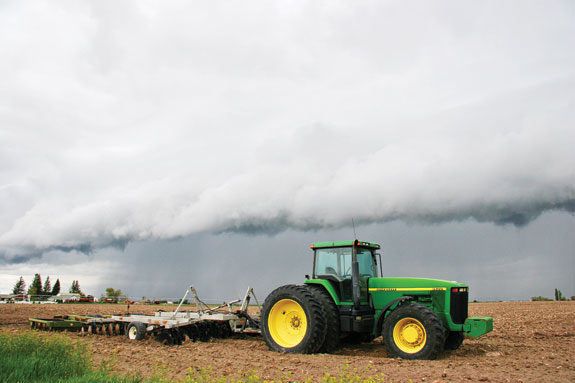Spring is here and, not surprisingly, diesel prices are trending upward. Taking time to implement a few simple management techniques can reduce farm fuel consumption and keep machinery running smoothly. Even with an established tillage strategy, it may be time to review profitability potential. Once you till beyond the first three to four inches of soil in a given tillage operation, the amount of fuel used increases directly with tillage depth.
Regardless of tillage management, some spring tractor operations will be required. Several techniques can help to save 5 to 15 percent or more of fuel. Consistently changing engine air and fuel filters on a timely basis, as suggested in the tractor operation manual, saves 3 to 4 percent of fuel. Cooling system maintenance is also important to ensure that the optimal combustion occurs.
Tractor operations required for row crops often don’t demand peak power from the tractor. When pulling lighter drawbar loads, such as small tillage equipment or a planter that may be mismatched to the tractor’s power, improve fuelefficiency by shifting the transmission to a higher gear and reducing the engine throttle setting.
Tractor tests indicate average fuel savings of 10 percent can be obtained when operating at three-fourths tractor load and approximately 20 percent savings at one-half load. Some newer, higher-horsepower tractors offer the option to do this automatically through use of electronic load sensors and a continuously variable transmission.
Tractor drive wheels must slip a bit to develop optimal fuel efficiency on soil surfaces. Optimal slip varies with conditions but, for heavier drawbar loads, slip should be in a range of about 8 to 13 percent on firm (untilled) soil and slightly greater, about 10 to 15 percent slip, on tilled soil throughout most of Iowa. Talk with your local extenstion office about optimal slip on soils in your local area.
Slip is difficult to see with the naked eye at these levels, but measurement is often available from the dashboard on newer or higher-horsepower tractors. If slip is outside these ranges, consult the operation manual for further information on proper ballasting.
Tire inflation also affects wheel slip and fuel economy. Know the correct inflation pressure for the weight the tire is carrying, use a good tire inflation gauge capable of reading lower pressures – less than 30 pounds per square inch (psi) – in 2 psi increments and check pressure periodically.
Most diesel tractors are relatively fuel efficient even at partial loads when the operator follows these tips, and shifting to a higher gear and reducing the throttle setting is particularly important for partial loads.
Before purchasing a new or used tractor, it’s still a good idea to consider size requirements, including engine power, hydraulic system capacity and braking ability. Information from OECD (Nebraska) tractor tests can be used to help compare projected fuel use by tractors under consideration.
For more information on these and other farm energy management topics from ISU Farm Energy, click here . PD
Mark Hanna is an extension agricultural engineer with Iowa State University . Dana Petersen is program coordinator for the ISU Farm Energy Initiative .
—Excerpts from Integrated Crop Management News, Iowa State University Extension









